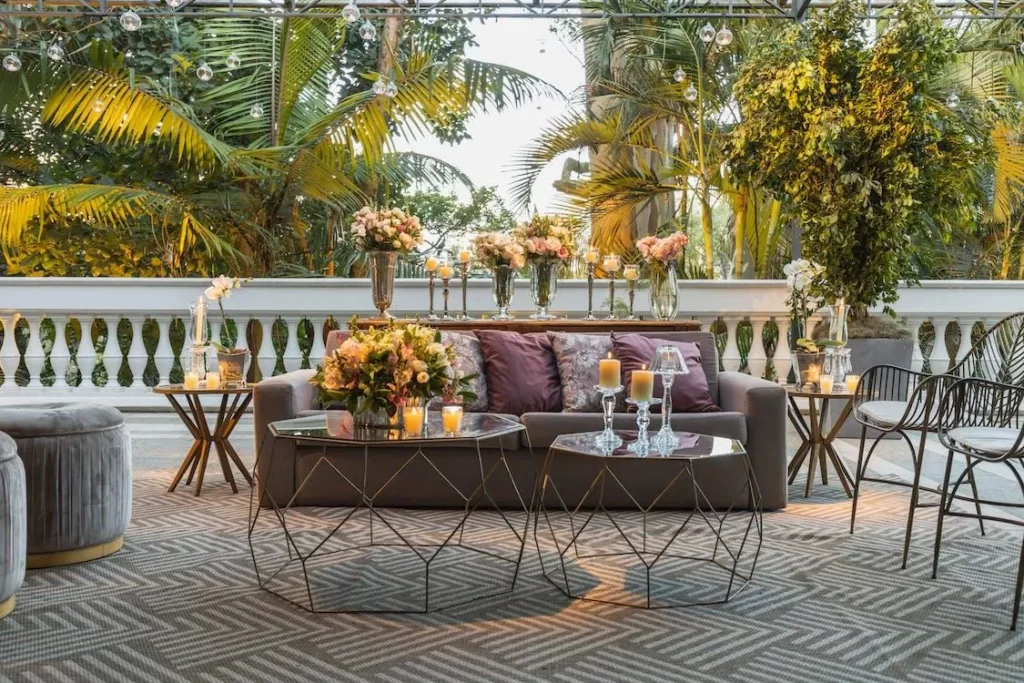Green Sustainable Designs: Paving the Path to a Greener and Economically Viable Future
Green sustainable designs have become a paramount aspect of modern society, driven by the global imperative to combat environmental challenges and create a sustainable future for generations to come. As the world grapples with issues like climate change, resource depletion, and pollution, the adoption of eco-friendly and energy-efficient designs has gained momentum. Embracing green sustainable practices across various fields, from architecture to product development, is crucial in mitigating our impact on the environment and fostering a more sustainable and economically viable world.
In this article, we explore sustainable designs in detail.
The Environmental Impact of Green Sustainable Designs

One of the core tenets of green sustainable designs is the use of renewable materials. Utilizing resources that can be naturally replenished helps preserve finite resources and reduces the strain on the environment. By choosing materials like bamboo, recycled wood, and reclaimed metals, we can minimize deforestation and reduce the carbon footprint associated with manufacturing and transportation.
Moreover, optimizing energy usage is a fundamental aspect of green sustainable designs. Incorporating energy-efficient technologies such as LED lighting, smart home systems, and passive heating and cooling techniques can significantly reduce energy consumption. This not only lessens our reliance on fossil fuels but also substantially decreases greenhouse gas emissions.
Waste management is another critical element of sustainable design. Implementing effective waste reduction and recycling strategies in both manufacturing processes and daily living can minimize the amount of waste sent to landfills. Innovative ideas like composting food waste, repurposing materials, and designing products for disassembly enable the creation of a circular economy that maximizes resource efficiency.
The Economic Advantages of Green Sustainable Designs

Beyond the environmental benefits, green sustainable designs offer substantial economic advantages. While the initial costs of adopting sustainable practices may appear higher, they translate into significant long-term savings. For instance, energy-efficient buildings consume less power, leading to reduced utility bills for homeowners and businesses alike. Additionally, organizations can benefit from tax incentives and rebates offered by governments to promote sustainable initiatives.
Incorporating sustainable practices can also foster innovation and open new markets. Businesses that align themselves with green sustainable designs can tap into this growing market, gaining a competitive edge and expanding their customer base.
The Role of Green Sustainable Designs in Architecture

Architecture plays a pivotal role in the adoption of green sustainable designs. Sustainable buildings, often referred to as green buildings or eco-homes, are designed to minimize environmental impact while providing comfortable living spaces. These structures utilize a combination of design principles, construction techniques, and renewable technologies to achieve optimal energy efficiency and environmental harmony.
Passive design strategies, such as orienting buildings to maximize natural light and ventilation, reduce the need for artificial lighting and air conditioning, thus decreasing energy consumption. The integration of solar panels on rooftops and facades allows buildings to harness renewable solar energy to power various systems, including heating, cooling, and lighting.
Rainwater harvesting systems, which collect rainwater from rooftops and store it for later use, help conserve water resources and reduce reliance on municipal water supplies. Green roofs and walls not only enhance the aesthetic appeal of buildings but also provide insulation, mitigate heat island effects, and improve air quality.
The Role of Green Sustainable Designs in Architecture

In addition to architecture, transportation is an area where green sustainable designs can create a substantial impact. The transportation sector is a significant contributor to greenhouse gas emissions and air pollution. Embracing sustainable transportation solutions can help alleviate these issues.
Electric vehicles (EVs) represent a prime example of green sustainable designs in transportation. By transitioning from traditional internal combustion engine vehicles to EVs, we can significantly reduce carbon emissions and dependence on fossil fuels. Advancements in battery technology have also improved the range and performance of EVs, making them a viable and sustainable alternative.
Promoting and investing in public transit infrastructure can encourage more people to use eco-friendly transportation options, thereby reducing the number of private vehicles on the road and decreasing overall emissions.
Sustainable Product Development and Packaging

Beyond buildings and transportation, green sustainable designs extend to product development and packaging. The concept of the circular economy emphasizes the importance of designing products with the intention of repurposing or recycling them at the end of their lifecycle.
Innovative packaging solutions made from biodegradable or recycled materials are becoming increasingly prevalent. These eco-friendly packaging options help reduce plastic waste, a major environmental concern. Bioplastics, for instance, are derived from renewable sources such as corn or sugarcane, offering a more sustainable alternative to traditional petroleum-based plastics.
Sustainable product development involves considering the entire lifecycle of a product, from sourcing materials to disposal. This approach encourages manufacturers to design products that are durable, repairable, and easy to recycle, minimizing the amount of waste generated.
Promoting Healthier Living Environments

Green sustainable designs benefit the environment and economy and prioritize human well-being. In sustainable architecture, the focus on natural lighting, ventilation, and the use of non-toxic materials enhances the indoor air quality and overall comfort of occupants. Studies have shown that buildings designed with these principles can positively impact occupants’ physical health, mental well-being, and productivity.
Incorporating green spaces and biophilic design elements in urban environments also promotes mental rejuvenation and stress reduction. Parks, green rooftops, and urban gardens create opportunities for people to connect with nature, fostering a greater sense of community and environmental stewardship.
Green sustainable designs are at the forefront of addressing pressing environmental challenges while providing tangible economic benefits. By adopting these practices, we can reduce our carbon footprint, conserve natural resources, and promote a healthier, more resilient planet. Moreover, businesses embracing green sustainable designs can thrive in an evolving marketplace, appealing to eco-conscious consumers and gaining a competitive advantage.
